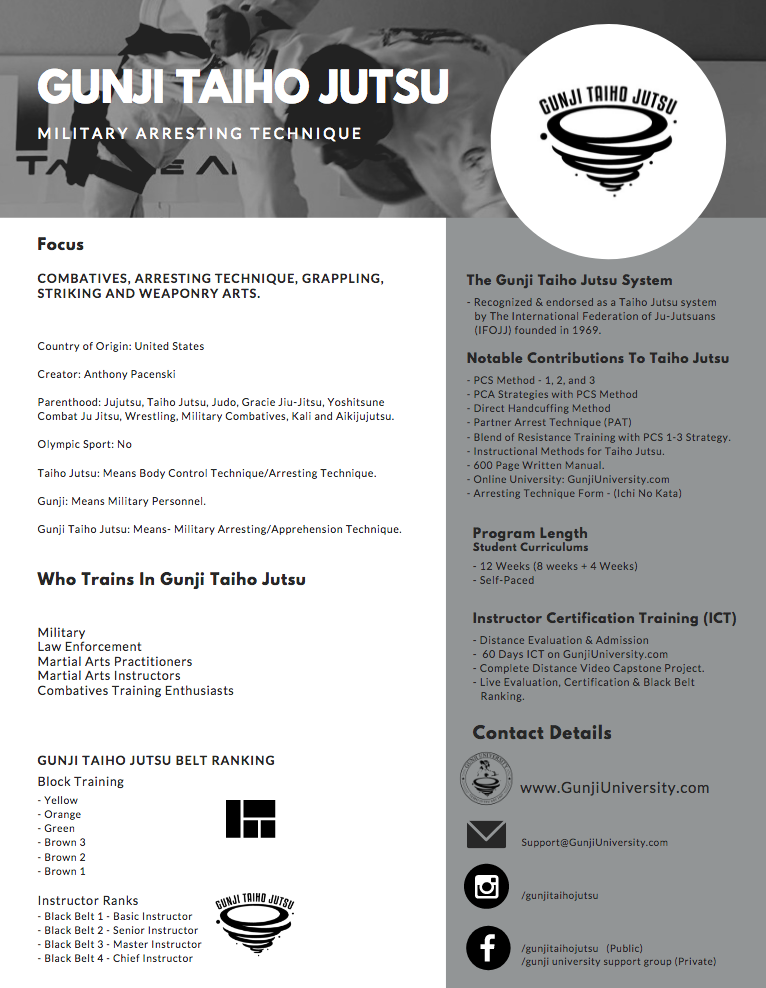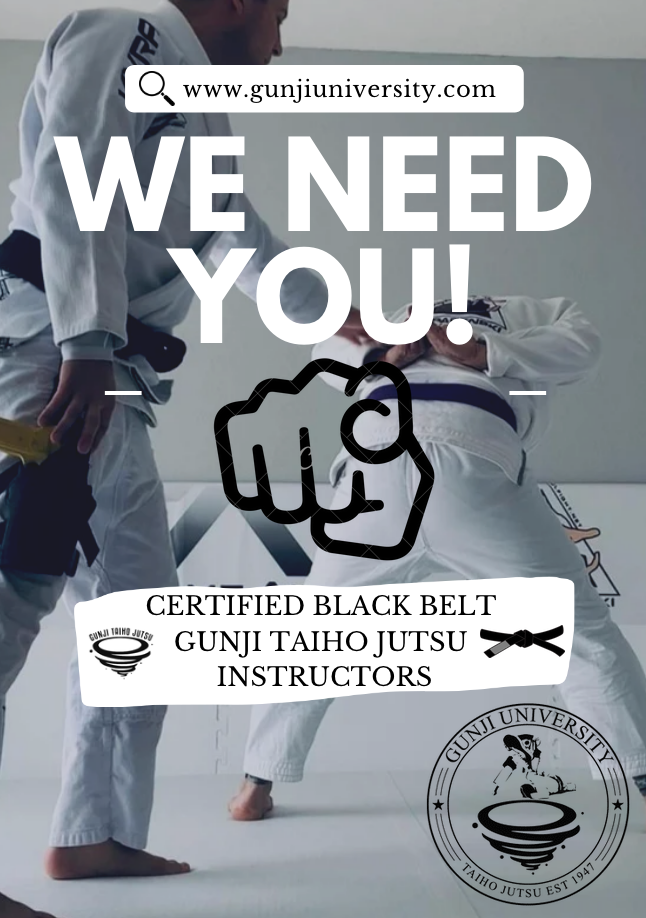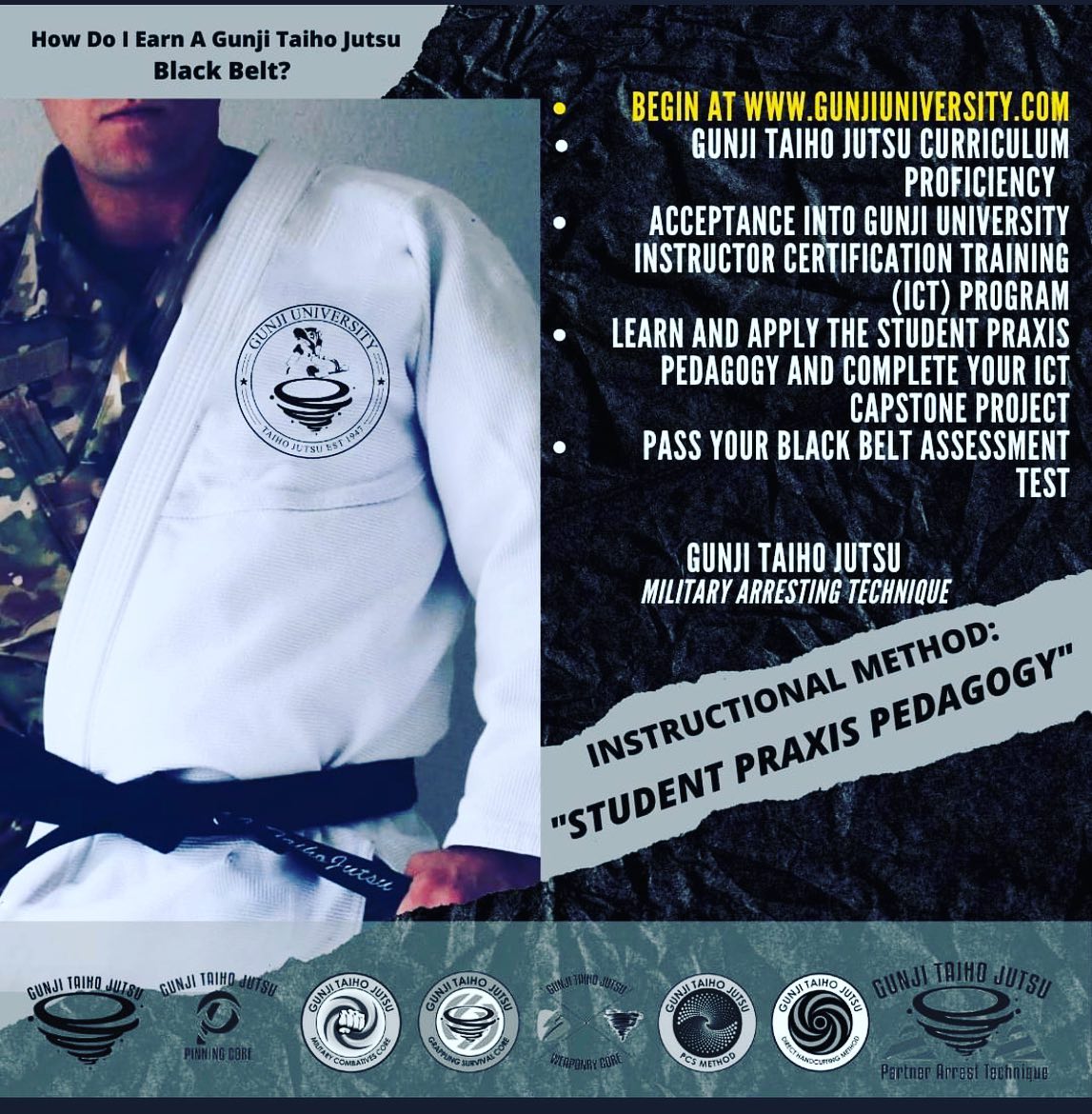The Discoveries of Taizan Ryu Taiho Jutsu and the Systems of Soke Joseph Miller

In typical fashion, just when you believe paths will not cross, I finally met Soke Joseph Miller (Retired Air Force) last week. I had been trying to find Soke Miller for some two years now in Japan, and on that day introduced myself and physically took the food basket out of his hands so we could shake hands. We could discuss Martial Arts, Budo, and Taiho Jutsu (arresting technique). Specifically, we got into Hakko Ryu Jujutsu, Yoshitsune Jujutsu, and Taizan Ryu Taiho Jutsu.
After departing, I got invited to the Taizan Ryu Dojo in Japan. At the time of this writing, I am now reflecting on the first of many more training sessions I received last night; before exploring the content of last night's training, it is crucial to understand who Soke Joseph Miller is and his experience with Soke Ryuho Okuyama, founder of the Hakko Ryu Jujutsu. There is a connection between Soke Okuyama, Soke Miller, and Gunji Taiho Jutsu.
Last night Soke Miller gave me the platform to let the students and instructors training at the Taizan Ryu Dojo know about my Martial Arts background. By the end of the training, Soke spoke about his experience training in Japan dating back to 1972. It was explained to me that Soke Miller during his Air Force career spent 18 years of 20 in Japan. There the recommendation letter by Soke Michael DePasquale Senior of the Yoshitsune Jujutsu system granted approval to train with Soke Okuyama at the Hakko Ryu Hombu Dojo in Omiya, Japan. Soke Miller traveled up to 6 hour one way during the weekends to train with Soke Okuyama every week. However, for the first 6 months, Soke Miller was told to clean the dojo and watch. Not train; just watch. From there he would come back to the Air Base and train the technique with other Airman not really understanding the names. Finally after 6 months, Soke Okuyama began teaching some wazas (techniques) of Hakko Ryu Jujutsu.

Soke Okuyama was a direct student of Takeda Sokaku who was the founder of Daito-Ryu Aikijujutsu. Takeda was the teacher of many senseis and off-shoot jujutsu systems including the founder of Aikido, Morihei Ueshiba. And in short, from a technical standpoint Aikido's techniques are from the Daito-Ryu Aikijujutsu curriculum much like Hakko Ryu. Returning to Soke Okuyama who founded Hakko Ryu Jujutsu in 1941; therefore, this style is a newer Budo in Japan. The system of self-defense targets the pressure points and nerves sensitive to pain. If you ever experience the locks of Hakko Ryu compared to Daito Ryu Aikijujutsu, Aikido and others, you will know that Hakko Ryu's techniques are much more painful; moreover, there is a connection to eastern medicine with the study of shiatsu.
With this in mind, Soke Miller's lesson begin with partner stretching and shiatsu techniques during the warm-up. It was determine that my body was in some bad shape in my knees, shoulders, hips and back. I always knew this from almost 30 year of Brazilian Jiu Jitsu training and the last two years of Budo training in Japan, including Judo, Kendo, Iaido, Aikido, Combatives and Taiho Jutsu. When the lesson techniques started, Soke Miller showed the 1st technique of the Taizan Taiho Jutsu system. It was a detailed technique from police officer stance work, to countering a punch and transitioning into the controlling top of the head pin (position of apprehension). After this technique, Shihan Chris Piatkowski was instructed to teach me Hakko Ryu Jujutsu wazas, including:
Hakko Dori
Ude Osae Dori
Ude Osae Dori Mune Osae Dori
Metsubushi Drills
Soke Miller applied shiatsu to me at the end of practice, focusing on my neck and shoulders. It was terrific to feel after everything was done. My neck and shoulders both had a better range of motion, which I was thankful for. Soke Miller was open through the instruction to answer any questions I had and give insight regarding the name Taizan Ryu. Soke Miller explains that this name was given to him after his Shihan testing of Hakko Ryu Jujutsu with Soke Okuyama in 1985. Soke Miller completed his Shihan test earning 9th Degree and the title of Menkyo Kaiden San Dai Kichu Shihan. Therefore, including jujutsu belt ranking and the teaching certificate of Menkyo Kaiden, Miller in 1985 was given the particular name by Soke Okuyama that used the month, date, and year of Soke Miller's birthday in astrology to coin the name: Taizan Ryu (Peaceful Mountain). In addition to this history lesson, Soke Miller took out a little wooden box. Inside, he pulled out his graduation Shihan scroll of all the Hakko Ryu Jujutsu techniques, some 400 wazas. The paper was rolled on the tatamis and went clear across the dojo. It was said to be made by 12 people and pieced together. Today the scroll looks just like in 1985, as Soke Okuyama told Soke Miller always to keep it in the box.
Today Soke Miller can look back at an impressive military career when he retired from the Air Force after 20 years and six months of service, having 18 years served in Japan. He acquired knowledge from Soke Okuyama and, in addition, created a full curriculum of Taizan Ryu. Specifically, Soke created the Taizan Ryu Taiho Jutsu apprehension techniques taught in the 1980s to the Air Force at Yokota Air Base in Fussa Tokyo. Other aspects of the Taizan Ryu system contain self-defense, Goshin Jutsu techniques, and shiatsu massage.

As for myself, it is an honor to learn as much as possible from Soke Miller and in a certain way continue the Air Force and Taiho Jutsu tradition that he started.

Taizan Ryu Taiho Jutsu training at the Taizan Dojo in Hachiōji, Tokyo - May 2023
Philosophy:
“The three major characteristics of Hakkoryu are: no challenge, no resistance, no injury. With Hakkoryu – for the first time – the eyes of the dragon are drawn.”
Ryuho Okuyama
Gunji Taiho Jutsu lineage connection:
Lineage Ju Jitsu From Japan: Takeda Sokaku (Daito-Ryu Aikijujutsu) > Okuyama Ryuho (Hakko Ryu- Jujutsu) > Junji Saito (Yoshitsune Jujutsu) > Michael DePasquale Senior (Yoshitsune Jujutsu) > Michael DePasquale Junior (Yoshitsune Combat Jujutsu & Yoshitsune Taiho Jutsu) > Tony Pacenski (Gunji Taiho Jutsu)
‘Teachers have three loves: love of learning, love of learners, and the love of bringing the first two loves together.’–Scott Hayden
To The Reader
The author will be most happy to receive your comments, including criticisms and suggestions. Noteworthy comments may be included in future editions or books on this series.
Citations for Educational Purpose:
Hakko Ryu Jujutsu
https://en.wikipedia.org/wiki/Hakk%C5%8D-ry%C5%AB
Taizan Ryu
https://peaceful-mountain-system.com/
– Prof. “little” Tony Pacenski
Yokota Air Base – Tokyo Japan
Gunji Taiho Jutsu (GTJ) | Military Arresting Technique is a system of taiho jutsu that is a progressive way to teach Military or Law Enforcement personnel many of the traditional and contemporary jujutsu techniques of control and arrest while at the same time keeping mindful of secondary weapon systems during training and complementing all of the current and evolving Military Combatives programs in place for the different branches of the Military.






